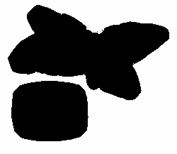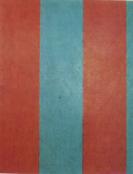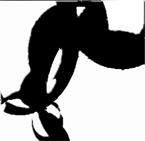

|
|
|
IMAGE UNDERSTANDING AND AESTHETIC
EVALUATION Z. Les (extract from a book that is prepared
for publication in the QJF Press) In traditional aesthetic, the interpretation of works of art in terms of their “form” or “structure” is often distinguished from the interpretation of work in terms of their “content” or “association”. For the picture, a “form” corresponds more or less to how a work of art is “composed”. The composition of the picture treats a work of art as a coherent whole that can be divided into several parts, each bearing a relation to the whole. The interpretation of a work of art in terms of its form considers the properties of this whole, its parts, and their relations. These properties in a painting include colour, shape, texture and a rule of composition of those elements on the picture’s plane. Image understanding refers to a computational approach to image interpretation. It stresses functional aspects of the information conveyed by an image, and can be expressed as follows: when an object (in the image) is discovered an action should be undertaken. Pictures which are created for artistic proposes cannot be regarded within this functional framework. However, the possibility exists of applying a similar image-understanding approach to this class of pictures in order to find a methodology that will allow for aesthetic evaluation of the pictures. The image-understanding approach has been used to develop a method of aesthetic evaluation of a class of pictures (abstract paintings). This method has been applied to a particular class of abstract paintings, the Mondrian class, in order to find composition rules of works of art and to evaluate pictures. To evaluate pictures from the Mondrian class a neural network method was used. General description of the method The method of aesthetic evaluation of a picture (an abstract painting), which is elaborated for the purpose of the present research, is based on an image understanding framework. The proposed method of aesthetic evaluation of the picture consists of two main stages: 1. To establish a generic class of pictures (which is established on the basis of the characteristic properties) and to find descriptors which can be used for aesthetic evaluation of the picture (within the same generic class). 2. For a given generic class, to find a form of an aesthetic evaluation function used for aesthetic evaluation of the picture in the sense that the picture can be recognised as a work of art or not a work of art. Picture In the present research the term “picture” refers to an abstract painting. The term “abstract painting” is often used to describe a set of works of art (paintings) which consist of geometrical figures, nonregular shapes or texture. Among pictures (abstract painting) there are pictures which are called works of art and pictures which are not works of art (ordinary pictures). It is assumed that a work of art is a picture (abstract painting) which was created until now, and can be found in galleries or art literature. On the other hand, there are many pictures (abstract paintings) which are created by painters but which are not recognised as works of art. These pictures are termed ordinary pictures. It is assumed that pictures which are works of art were distinguished from a large number of pictures by critics based on aesthetic criterion (in the present research problems of new aesthetic or anti-aesthetic are not discussed). Shape In art shape is often described in terms of boundary curve or as a region of a given colour. In an “abstract” painting, shape is often described as a circle, ellipse, square or irregular shape. In image understanding, shape analysis provides a means of symbolic description of the image. Three-stage processes are used in shape analysis: shape detection, shape description and representation, and shape classification. This method, which enables shape description as a set of primitives and a set of rules, can be used for aesthetic evaluation of the picture. The rules which are thus obtained can be used to discover regularities among the shapes of a work of art. Texture Texture can be viewed as a global pattern arising from the repetition, either deterministically, or randomly, of local patterns and can be defined as a repetition of the basic texture elements called texels. In painting texture relates to the surface of the picture and is a result of applying different techniques to evoke an artistic effect. Texture elements are arranged according to placement rules which can be random or regular. For example, Pollock’s picture, which was obtained by dripping a liquid paint from a can or spattering it in long arabesques with a stick, possesses a texture which can be described as a “random” placement of texture elements. Some picture regions (picture elements) possess a characteristic texture which can be analyzed by using methods of texture analysis. There are many methods of texture analysis, such as autocorrelation function method, texture transforms method, congruence matrix or co-occurrence matrix which can be used to obtain a set of picture descriptors. Image processing The visual attributes of picture objects such as shape and texture can be characterized by a set of descriptors obtained by applying image processing methods. A method of aesthetic evaluation of the picture which was established for the purpose of the present research allows evaluation of a large class of pictures. Depending on the class selected (e.g. Kandinsky or Mondrian class), the different image processing methods can be applied to find a set of picture descriptors. Edge detection, segmentation and filtering are some of the methods that are used. on many of the pictures. Examples of the image processing method applied to extract useful information from an image are shown below.
Examples of the extracting the shape from the ordinary picture by applying the image processing method. Examples of extracting the shape and structural information from the picture (work of art) by applying the image processing method. Examples of extracting shape and structural information from the picture (work of art) by applying image processing method
Examples of extracting shape and structural information from the picture (work of art) by applying image processing method
|
Copyright the Queen Jadwiga Foundation














